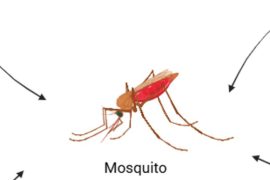Spine problems like chronic back pain, post-surgery pain, disc herniation, and spondylolysis can greatly affect an individual’s quality of life. While surgery might be required in some cases, there are several effective non-surgical and interventional treatment options that can help manage and alleviate these issues. These options include physical therapy, chiropractic care, regenerative medicine techniques such as platelet-rich plasma (PRP) injections and stem cell therapy, as well as other minimally invasive procedures like epidural steroid injections and nerve blocks. These treatments aim to reduce pain, improve function, and enhance overall well-being without the need for more invasive surgical procedures.
Traditional Interventional Treatment Approaches
- Epidural Steroid Injections: These injections deliver corticosteroid medication directly into the epidural space around the spinal cord. The aim is to reduce inflammation and relieve pain caused by conditions such as herniated discs, spinal stenosis, and radiculopathy.
- Facet Joint Injections: These target the facet joints located between the vertebrae. The injections contain a local anesthetic and a corticosteroid, which help alleviate pain and inflammation in these joints, commonly associated with back and neck pain.
Advanced Regenerative Treatment Approaches
- Degenerative Disc Disease (DDD) Procedure: This involves the use of Bone Marrow Concentrate (BMC), which contains repair cells harvested from the patient’s own bone marrow. The cells are reinjected into the affected area on the same day. The treatment protocol often includes:
- Platelet-Rich Plasma (PRP) Injections: Customized, super-concentrated platelets and platelet lysate are injected to treat the full segment of the spine.
- Pre-Injection Prolotherapy: Sometimes included to enhance the effectiveness of the BMC.
- Bone Marrow Aspiration and Re-injection: A procedure to collect and reintroduce bone marrow concentrate.
- Orthorenew-Regenexx USA Platelet-Rich Plasma: A follow-up injection of proprietary PRP concentrations is administered a few days later.
- Antibiotic Administration: To reduce infection risk, particularly in spinal treatments.
- Epidural Platelet Injection: An additional step involving an epidural injection of platelets for comprehensive spine treatment.
Non-Surgical Treatment Approaches
- Physical Therapy: Essential in non-surgical management of spine issues, physical therapy involves customized exercise programs designed by trained therapists. These programs target pain sources, improve flexibility, and strengthen core and supporting muscles, which helps in pain reduction, functional improvement, and injury prevention.
- Medication Management: Various oral medications, including anti-inflammatory drugs, muscle relaxants, and pain relievers, are used to manage pain and inflammation. In some cases, topical medications or nerve blocks may be prescribed for targeted pain relief.
- Lifestyle Modifications: Simple changes in lifestyle can significantly impact spine health. Maintaining a healthy weight, practicing good posture, and making ergonomic adjustments in the workplace can help manage spine problems and prevent future issues.
Recent research and medical advancements in non-surgical and minimally invasive interventions have expanded treatment options for spine problems. These approaches offer effective, trusted alternatives to traditional surgical methods, with proven results in managing and alleviating spine-related conditions.
Disclaimer:
The information contained in this article is for educational and informational purposes only and is not intended as a health advice. We would ask you to consult a qualified professional or medical expert to gain additional knowledge before you choose to consume any product or perform any exercise.







